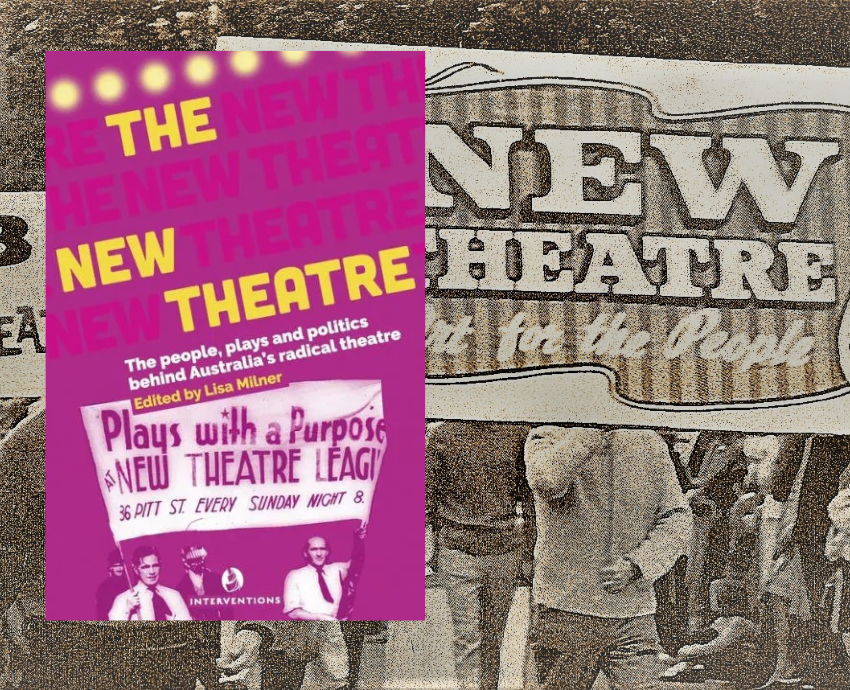
The New Theatre: The people, plays and politics behind Australia's radical theatre
Edited by Lisa Milner
Interventions, 2022, 632 pp., $40
Where in the history of Australian theatre have women filled many and the most prominent roles, including those of creative and production directors, and playwrights? The answer is the New Theatre, which is the subject of this edited collection of essays.
Even now, arts organisations in Australia go nowhere close to achieving what the New Theatre has done since its inception.
As Lisa Milner and Cathy Brigden mention in their chapter, the role of women is absent from the theatre chapter in The Encyclopaedia of Women and Leadership in Twentieth Century Australia. This will surprise no one on the left.
However, in the 1940s and ’50s, many of the writers for the New Theatre were women. Mona Brand, Oriel Gray, Dorothy Hewett, Dymphna Cusack and Betty Roland were all powerhouses of Australian feminism and writing.
The theatre also produced some of the first plays to deal with injustice against First Nations people, with Jack Charles finding his first roles there.
Plays involving workers’ struggles and working-class themes were the New Theatre’s bread and butter. The Sydney theatre even staged a play underground for miners on a stay-in strike. These are covered in detail, as are the dramatic stories of struggles with the state and censors to stage the plays themselves.
These historical highlights are just some of interest to readers of left cultural history to be found in this collection, which chronicles the people, plays and politics behind Australia’s radical theatre.
Arising from radical theatre experiments in the 1920s both in Australia and overseas, New Theatres spread from Sydney to Melbourne, Adelaide, Perth, Brisbane and Newcastle. There is a chapter on each of these, which tell a largely linear history.
These are followed by thematic chapters.
The contrast between women’s experiences in the New Theatres and in mainstream Australian theatre is ably told in the chapter "No Handmaidens Here: Women, Volunteering and Gender Dynamics". The fight for equality for other structurally marginalised groups is also chronicled.
The complex links between the New Theatre and the Communist Party of Australia (CPA) are illuminated. Not all New Theatre members were CPA members.
The vacillations of the CPA’s attitudes to World War II, as it followed the Soviet line from anti-war to pro-war, affected the types of plays that were staged. Nationalism fell in and out of favour as well, again depending on the Party’s political line.
But the New Theatres developed a voice of their own, putting on plays by George Bernard Shaw as well as radical plays. It wasn’t all serious — revues (such as Let’s Be Offensive) and satires of bourgeois culture abounded.
The most successful play, Reedy River, about the 1880s shearer’s strike, has been seen by about 450,000 Australians since its first production in the early 1950s. It is credited with starting the revival of Australian folk music, and its last production (to date) was in 2002. It has obviously made an immense contribution to Australian cultural life, but has been largely ignored by mainstream narratives.
The New Theatre essays are inspiring, and do much to rescue the plays and stories of struggle that accompanied the political struggles of left-wing currents in Australian society over the past 90 years.
Another new book about 1970s Australian theatre, Staging the Revolution, has received quite a few reviews in the mainstream press. It chronicles the struggle of five women in the 1970s to challenge the patriarchal culture of Australian theatre at that time. I’ve yet to read one review that mentions this had already happened in left-wing and radical theatre decades before.
The history of Australian radical theatre really is worthy of celebration.
[Maree F Roberts is an activist and author. Her novel, The Impossible History of Trotsky’s Sister, was partly inspired by the New Theatre.]